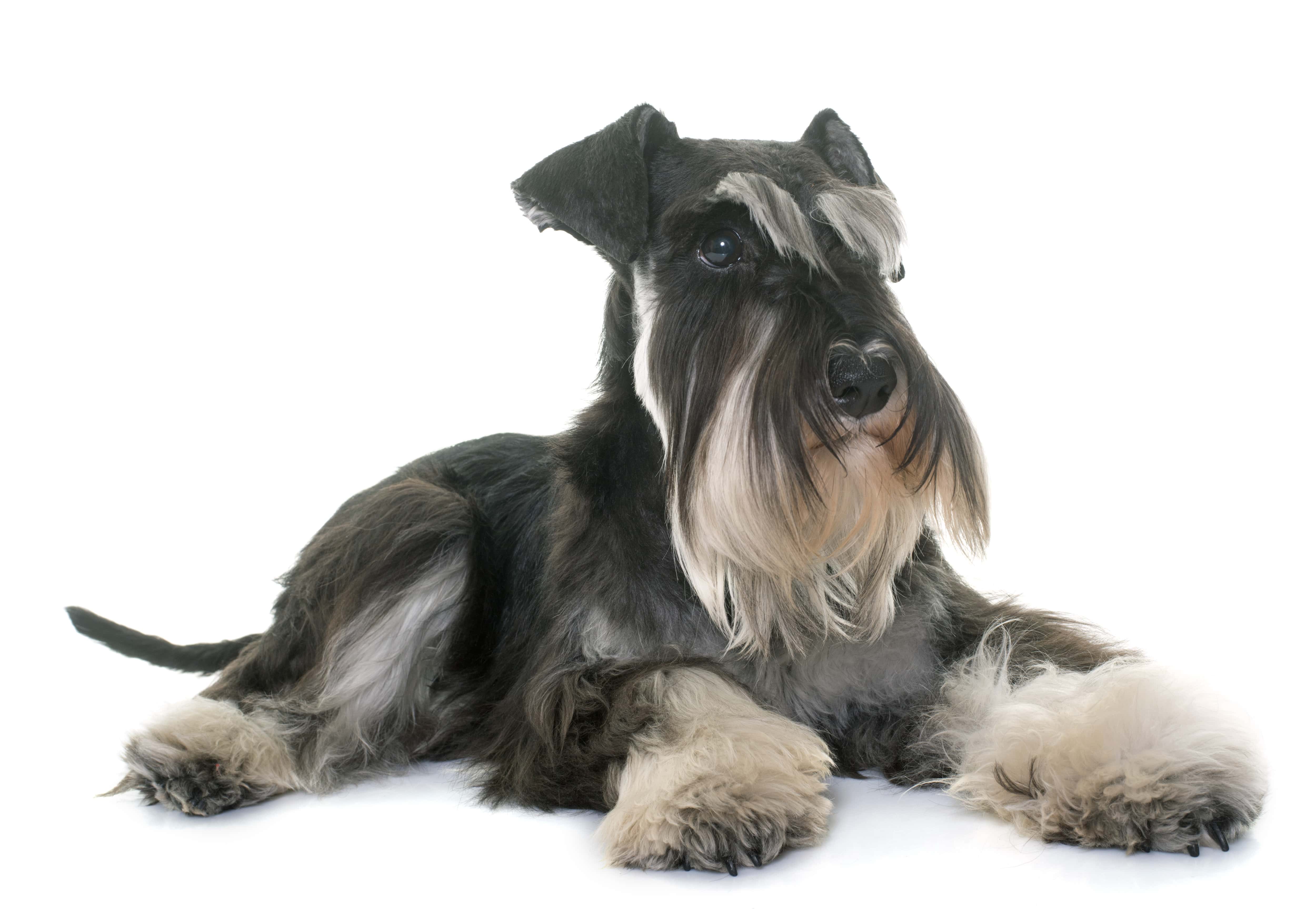Miniature Schnauzer Grooming
Miniature schnauzers are a breed whose compact size, playfulness and devoted friendship have made them popular pets. Their boxy build, mustaches, long beards and eyebrows make them a striking companion to have too. Due to the length of their fur, particularly around their facial area, a miniature schnauzer’s double coat needs lots of grooming to keep it neat and comfortable for your dog.
Ideally, grooming should be carried out at least once a week. A pad brush will groom through the main body coat and a slicker brush to gently pull through the beard. A metal comb can be used for its eyebrows and to tease out any tangles which mostly occur in the friction areas, such as behind the legs or around the rear. Inspect your dog’s feet between the pads to look for any cuts, mats or grass seeds. For extra comfort, trim away the excess fur between the pads using blunt ended scissors.

The amount you bathe your dog depends on your pup’s lifestyle. Some people like to wash their schnauzers weekly, ranging up to every six weeks. Make sure your dog has been brushed, mat and tangle free beforehand to ensure washing is thorough. Use a dog shampoo suited to the breed and massage into the skin, rinsing out thoroughly. Use a pet hairdryer to dry your pooch, brushing as you go to prevent knots from forming.
Most schnauzers are groomed in a very specific way, where their top fur is shaved and the hair is left longer on the chest and behind the legs – this doesn’t have to be adopted for your pet however. Research what clipping style you’d like for your schnauzer and watch a few tutorials to get an idea of how you clip for the desired look. You can keep your schnauzer’s coat looking neat by clipping it every six weeks or so. During the winter, keeping your dog’s coat a little longer will help with warmth – you’ll only need to trim any unruly areas occasionally.
Special attention should be paid to your schnauzer’s face, where its beard and eyebrows are its dominant features. Eyebrows should be trimmed in a straight line to the outer corner of the eye and the beard only needs to be trimmed for shape – the head should be relatively square. Ears benefit from having the excess hair removed from the inside. Some owners can find this a daunting process, and you can use your fingers rather than tweezers to do this. You can pull in a circular motion rather than just pulling outwards. Nails should be kept quite short, at least level with the pads when the dog is standing. A pair of nail clippers or a dremel sanding tool can be used to achieve this.
